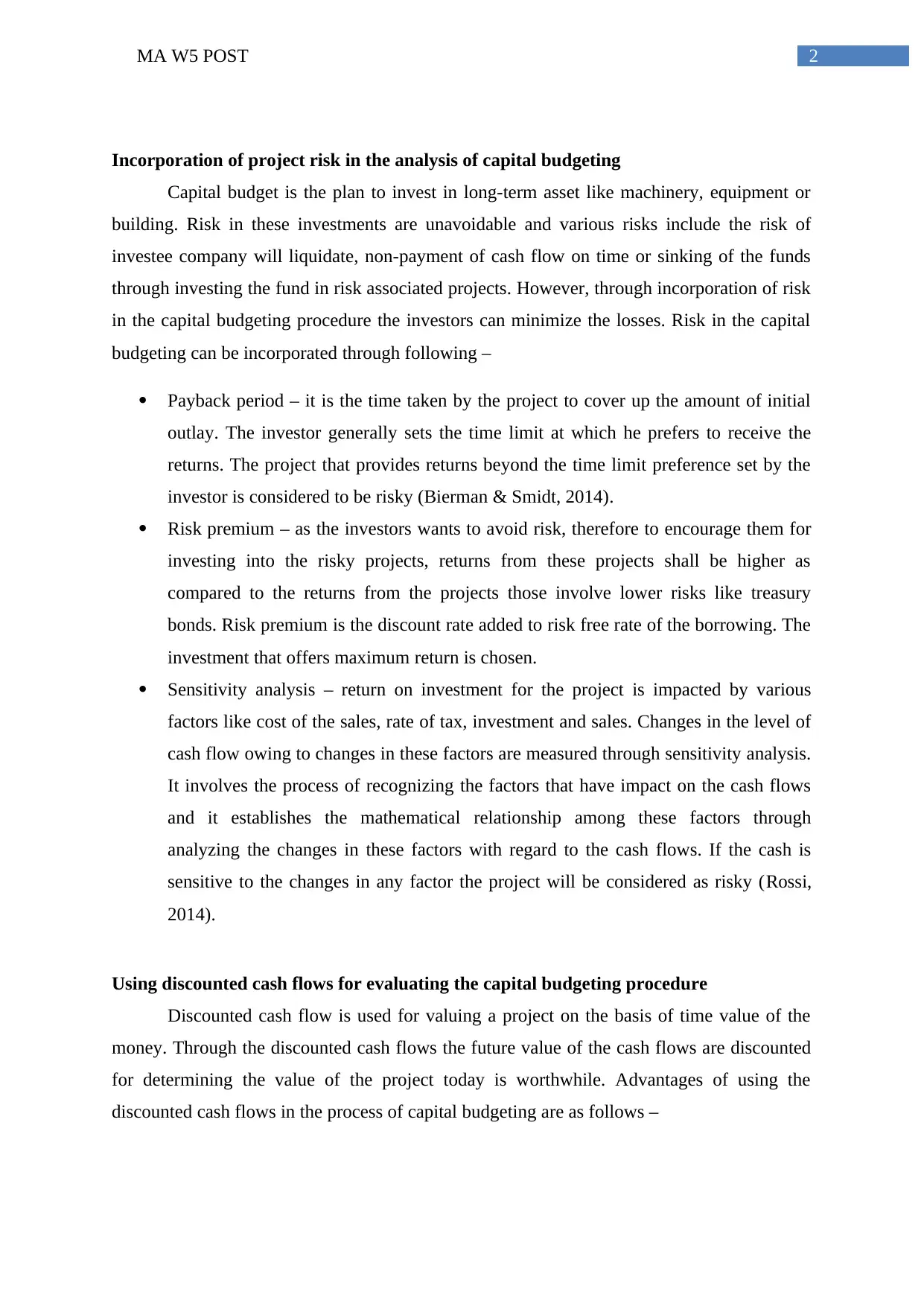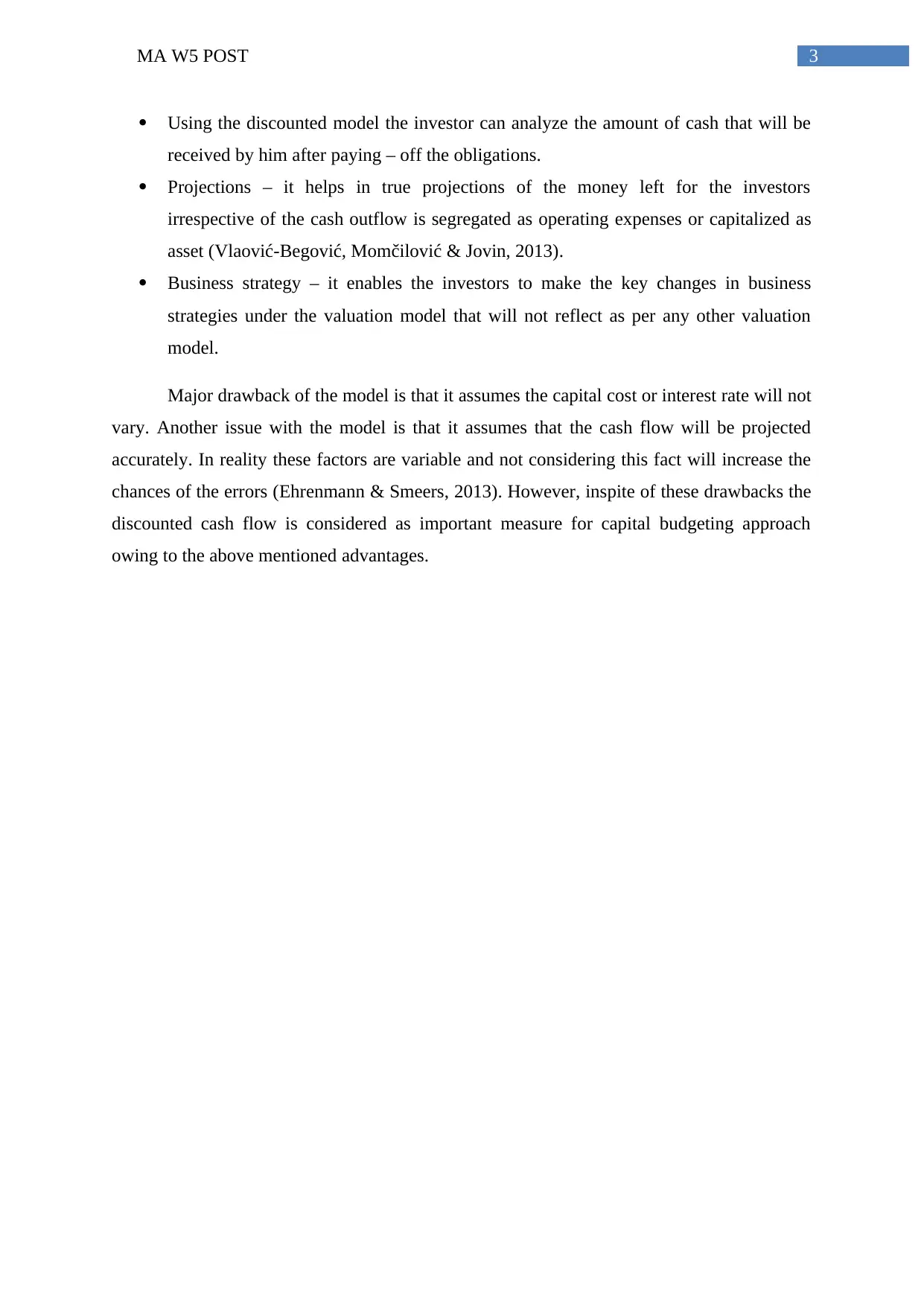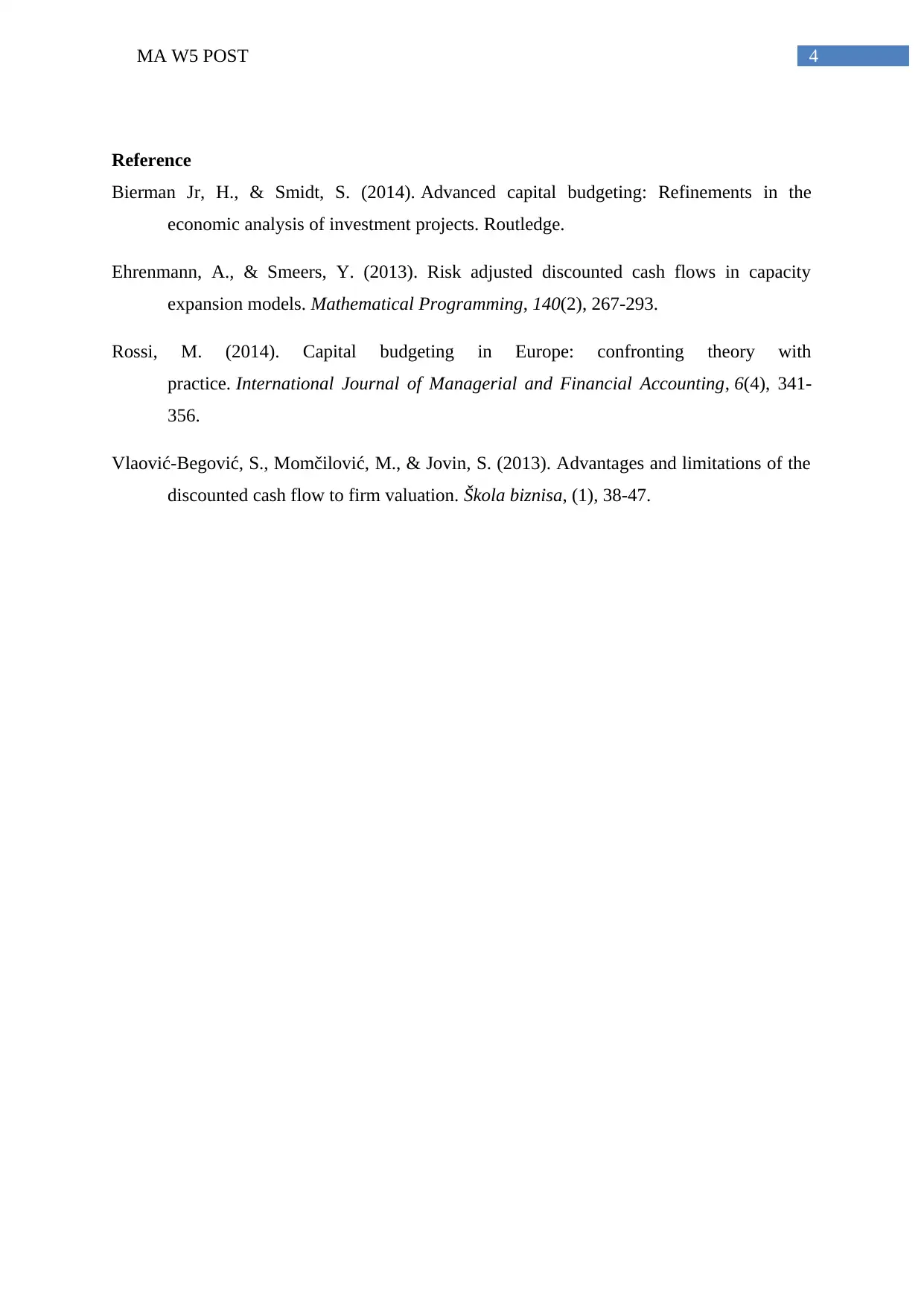MA W5: Project Risk and Discounted Cash Flows in Capital Budgeting
VerifiedAdded on 2023/06/11
|5
|792
|118
Discussion Board Post
AI Summary
This discussion post delves into the crucial aspects of capital budgeting, emphasizing the incorporation of project risk and the utilization of discounted cash flows for effective evaluation. It highlights the importance of considering risks such as investee company liquidation and non-payment of cash flows, suggesting methods like payback period analysis, risk premium assessment, and sensitivity analysis to mitigate potential losses. The post also explores the advantages of using discounted cash flow models, including their ability to analyze net cash receipts, facilitate accurate financial projections, and inform key business strategy decisions. While acknowledging drawbacks such as the assumption of constant capital costs and accurate cash flow projections, the post underscores the significance of discounted cash flow as a vital measure for capital budgeting. Desklib provides a platform to access similar solved assignments and resources for students.
1 out of 5











![[object Object]](/_next/static/media/star-bottom.7253800d.svg)